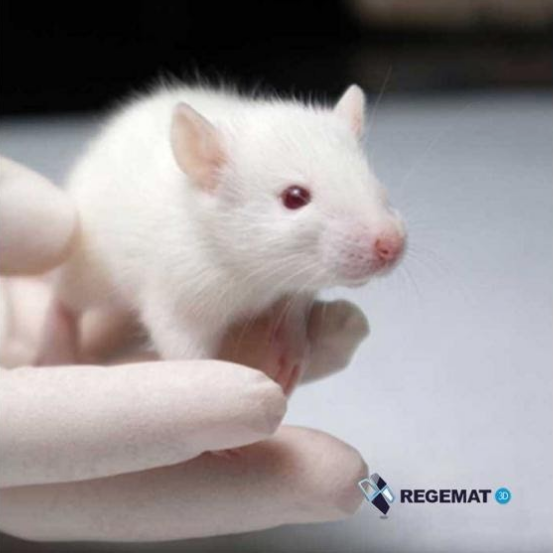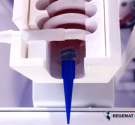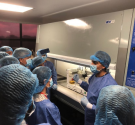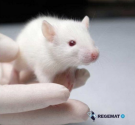3D Bioprinting The alternative to animal testing?
Currently, the medical-pharmaceutical industry uses the animal test to validate the feasibility of a new treatment. This phase, which today is essential, involves, In addition to a great investment, having to deal with ethics and with the tedious regulation by which these processes are governed, but given the advances in science, one might ask: Is this process really necessary or are there other alternatives?
The process of launching a new treatment on the market requires to ensure its effectiveness indispensably. This effectiveness is subject to animal testing to check results under conditions that mimics reality in the human body, which is called “In vivo”
3D bioprinting is a solution given that it involves a fusion between tissue engineering and the highly fashionable additive manufacturing, or more commonly known 3D printing, applied to regenerative medicine. Thanks to technological advances, the aim is to move from testing drugs in cell cultures on Petri dishes or developed in the laboratory, to test these drugs on human tissues grown in 3D structures (3D Matrices) bioprinted in three dimensions and with materials compatible with the in vitro conditions.
Testing the drugs “in vitro” is not a guarantee that the results obtained are reproduced in the “in vivo” model, but it certainly represents a significant saving in economic resources. The tests carried out on animals make it possible to check the reactions that could occur when applied to living organisms and the behavior that is reproduced in them. Therefore, obtaining successful results in the animal model is a simple path that makes it easier to overcome the tedious and restrictive regulation and therefore makes it easier to bring the results to the pharmaceutical market.
For all these reasons, one of the great challenges currently being faced is that of completely replacing the animal testing phase. Even though it is a complicated project thanks to the research groups and biotechnology companies that work on it, it is still possible to reduce it substantially. Some of the techniques that have been implemented for its reduction and that are currently applied are the following:
- Organoides:
They are developed as an alternative to the two-dimensional cell culture currently used to study cell behavior in an environment similar to the human body.
Organoids, also known as mini-organs, are developed by applying bioprinting technologies to groups of stem cells in three dimensions on which nutrients or growth factors are applied, resulting in a mini-organ.
As an example of the successes achieved in this area in recent years, it is worth mentioning the work carried out by Dr. Carmine Gentile at the University of Sydney who has implemented the use of this technique to reproduce cardiac tissue in necrotic areas in case of cardiac pathologies such as a heart attack
Another successful application of this technology has been the development of brain organoids for the study and search for solutions in different cases of neurological diseases. The results obtained are not sufficiently reliable to be able to transfer them to the clinical phase, but it will undoubtedly be a key action in the early phases of drug testing. Research groups working in this specific area bet that the results will mean a considerable reduction in animal testing as well as significant cost savings for the pharmaceutical industry.
- Bioimpresión 3D de tejidos vivos humanos:
The use of additive manufacturing technologies, 3D printing, has facilitated the possibility of reproducing complex shapes and structures from a digital design, and also using different types of materials for this.
The application of this technology in the reproduction of structures that mimic human living tissues using autologous cells (from the patient himself) is what is known today as 3D bio-printing.
Bioprinting a matrix with human cells is a great advantage since it will allow reproducing results closer to the conditions that occur in the human body than those obtained with two-dimensional cell cultures.
In this line, the Spanish company Regemat 3D in collaboration with the also Spanish Bioiberica work with the objective of developing solutions that improve health and quality of life, both human: animal and plant. In this long-distance career they embark on a process of constant innovation of their 3D bioprinting systems in order to validate them for new applications.
” There are different types of 3D bioprinting equipment on the market, we have managed to differentiate ourselves by customizing each bioprinter to the specific application taking into account the needs of each of the research groups with which we are currently working on. With our scientific-informative approach we seek validation of our system for different applications, therefore, we support all our collaborators, helping to bring their results to the clinical phase, as we have experience in this field with our medical device company ‘ ‘Breca Health Care’ ‘ . Quote Jose Manuel Baena, CEO of Regemat 3D and Breca Health Care.
Another application area of animal testing is the cosmetic industry in which, for example, pigs are used to check the reactions produced by applying makeup on their skin, the transfer that occurs between the different layers of the skin when applying antibiotic or anti-inflammatory creams, or the UV rays filtering capacity of some sun formulas.
The start of the investigation of the use of bioprinting as an alternative to animal testing is relatively recent, which implies that conclusive results have not yet been obtained that allow a comparison between those obtained through animal testing and those obtained through the Tested on human bioprinted structures and / or tissues. Therefore, there is still a long way to go in these lines of research and the objective is still relatively far away, to achieve this objective it is necessary to promote new lines of research, although it is true that there are tools that already facilitate the opening of these new lines.
- Organ-on.a-chip:
As its name suggests, this technology gives researchers the ability to grow cells within a chip so that they can test drugs on those chips, substantially reducing costs and much faster than in the animal model. .
This technology offers to the research groups different types of chips, each one according to the organ you want to reproduce, therefore there are chips to grow cells and tissues of the heart, brain, kidneys … It also allows unlimited reproduction on the same chip of any of the conditions that occur in an in-vivo organ. This is why it is a technique that can be tremendously complex depending on the number of tissues that you want to connect.
A benchmark in the use of this technology is the Madrid 3D platform of the La Paz hospital (PITI3D) under the coordination of CEO Regemat 3D José Manuel Baena. In this platform, one of the research teams focuses, among other applications of 3D bioprinting, on the development of an organ-on-a-chip kit applied in treatments against colon cancer tumors.
In this article, reference has been made to the use of 3D bioprinting technologies as an alternative to the animal model in drug testing processes, but the inclusion of 3D bioprinting in research represents a wide range of possibilities in terms of your applications.
Today, Regemat 3D bioprinting technologies and systems are applied, for example, in corneal regeneration. In this field, the PITI3D of the La Paz hospital recently won the award of a project for corneal regeneration. This project is a great challenge due to the complexity of the structure of this tissue, so it is essential to develop a bioink that is compatible with the patient and that allows the results to be transferred to the preclinical phase in order to reproduce functional corneal tissue.
Other applications that are also currently being worked on are the generation of trilaminar skin with a direct application not only in burns but also in the regeneration of the skin needed in patients suffering from butterfly skin pathology.
Regemat is present in the more than 28 countries around the world where collaborators work in the generation of various tissues in addition to those already mentioned (cartilage, bone, cardiac tissue …) but not only in the tissue generation but also in the development and testing of new biomaterials. Groups around the world work in this area to find the perfect mix that allows to print functional organs and validate bioinks for specific applications, specific diseases and all kinds of injuries such as for example the regeneration of osteochondral lesions in the knee.
In this same line of development and always aligned with the needs expressed by researchers regarding their lines of research, Regemat 3D takes a further step towards the development of its equipment. We initiated the development of its line of bioreactors for specific applications, so that the bioprinted tissue can be subjected to bioreaction processes, achieving its maturation and obtaining implantable functional tissues that allow regenerating or replacing damaged tissues
** PUBLISHED IN:




